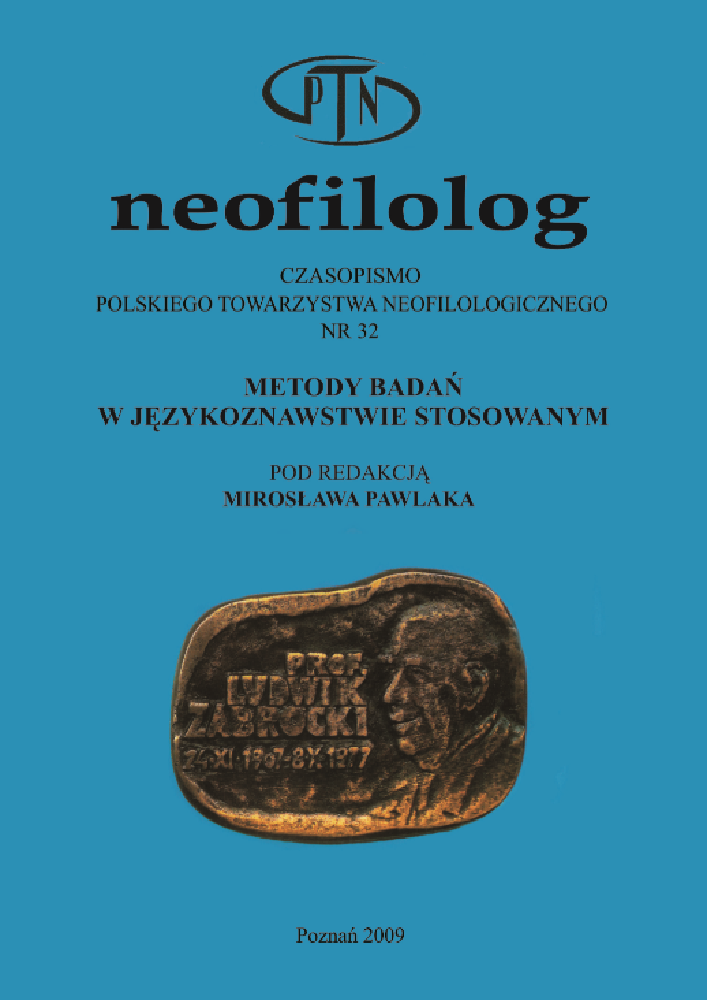Abstrakt
The Childes Language Data Exchange System (CHILDES), composed of Codes for Human Analysis of Transcripts (CHAT) and Computerized Language Analysis (CLAN), offers the possibility of transcription, grammatical coding and analysis of transcripts of language data, which can be used in psycholinguistics research. The CHILDES system enables us to code language data and provides easy and fast access to automatically-generated sets, such as, for example, statistical information concerning the frequency of words, the contexts in which they appear, syntactic properties, combination of keywords as well as type/token ratio. The paper briefly presents the CHILDES, with a particular emphasis on those of its functions which can be employed in research on language acquisition.
Bibliografia
Broeder, P., Extra, G. i van Hout, R. 1993. „Richeness and variety in the developing lexicon”, w: Perdue, C. (red.). 1993. 145-163.
Champaud, C. 2001. „Une introduction au système CHILDES en français”. (http:///childes.psy.cmu.edu/intro/french.pdf [maj 2009]).
Demagny, A. C. i Paprocka-Piotrowska U. 2004. „L’acquisition du lexique verbal et des connecteurs temporels dans les récits de fiction en français L1 et L2”. Langages 155. 52-75.
Mac Whinney, B. 2000. The CHILDES Project: Tools for Analyzing Talk. NJ: Lawrence Erlbaum Associates. (http:///childes.psy.cmu.edu [maj 2009]).
Paprocka-Piotrowska, U. 2008. Conter au risque de tout changer. Complexité conceptuelle et référence aux procès dans l’acquisition du français L2 et du polonais L2. Lublin: Towarzystwo Naukowe KUL.
Perdue, C. (red.). 1993. Adult language acquisition: Cross-linguistics perspectives. Cambridge: Cambridge University Press.
Licencja
Prawa autorskie (c) 1970 Paprocka-Piotrowska

Utwór dostępny jest na licencji Creative Commons Uznanie autorstwa – Bez utworów zależnych 4.0 Międzynarodowe.
Przedstawiany utwór (artykuł) upubliczniany jest na podstawie umowy z autorem i na licencji Creative Commons Attribution-NoDerivatives 4.0 International (CC BY-ND 4.0).
Użytkownicy mają obowiązek podania wraz z rozpowszechnionym utworem, informacji o autorstwie, tytule, źródle (odnośniki do oryginalnego utworu, DOI) oraz samej licencji;
- bez tworzenia utworów zależnych,
- utwór musi być zachowany w oryginalnej postaci.
Uniwersytet im. Adama Mickiewicza w Poznaniu zachowuje prawo do czasopisma jako całości (układ, forma graficzna, tytuł, projekt okładki, logo itp.).
